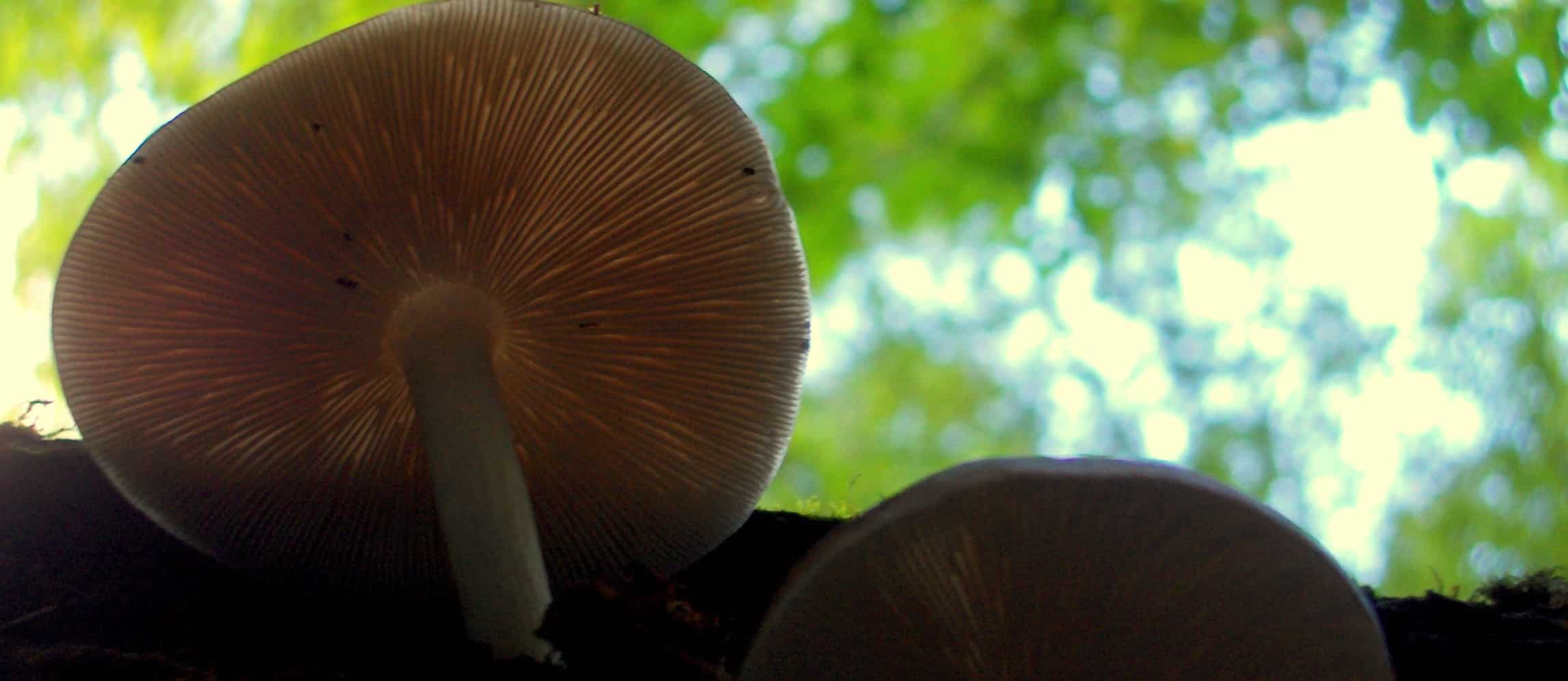Years ago, it was shown that vitamin D isn’t just the sunshine vitamin for us, but for mushrooms as well. You take some mushrooms, put them under a sun lamp for an hour, and they’ll make vitamin D just like we do lounging at the pool.
Unfortunately most mushrooms you buy at the store don’t have any vitamin D because they’re grown in the dark, but now there are sun-bathed varieties on the market that boast significant levels. Some mushrooms grown out in the wild have vitamin D as well, but only about 12% of one’s recommended daily allowance per cup.
Is the vitamin D in mushrooms bioavailable? In 2008 there was a case report of a dark skinned individual living in England in the winter who–like the other 9 out of 10 South Asians living in the UK–was vitamin D deficient. His physician prescribed a vitamin D supplement, but after doing his own research this patient decided to self-treat. He bought a UV bulb from a local hardware shop and proceeded to shine it directly onto 2 cups of regular mushrooms a day before stir-frying and consuming them. He repeated this on a daily basis for 3 months, and indeed his vitamin D levels shot up and he was cured. So it’s reasonable to assume that such mushrooms may be able to provide a source of vitamin D for those at risk for deficiency. This was just one person though, so further studies were necessary, and finally those studies have been done.
In my 5-min video Is Vitamin D3 Better Than D2? I profile a study entitled Bioavailability of Vitamin D from Ultraviolet Light Irradiated Button Mushrooms in Healthy Adults Deficient in Serum 25-Hydroxyvitamin D: A Randomized Controlled Trial. The mushrooms were compared to vitamin D supplements and placebo, and both the mushrooms and the supplements were equally effective in raising vitamin D levels compared to the placebo.
The type of D made by mushrooms is vitamin D2, which is typically derived from yeast and is the form traditionally prescribed by doctors to cure D deficiency. Most supplements, though, are D3, which is the type found in plants and animals, typically derived from sheep’s wool. Back in 2008 it was established that vitamin D2 was as effective as D3 in maintaining one’s vitamin D levels at standard daily dosing levels. As you can see in the video, whether folks were given D3, D2, or a combo of half D3 and D2, it didn’t seem to matter much in terms of improving vitamin D levels in the bloodstream. But that was 5 years ago–what’s the update? Is vitamin D2 better than vitamin D3? It depends how you take it and what your starting levels are. Watch my video Is Vitamin D3 Better Than D2? for the latest details.
Here are my vitamin D recommendations for those in the northern hemisphere:
- Below approximately 30° latitude (south of Los Angeles/Dallas/Atlanta/Cairo)
- 15-30 minutes of midday sun (15 for those with lighter skin; 30 for those with darker skin)
- or 2,000 IU supplemental vitamin D daily
- Between 30° latitude (sample cities above) & 40°latitude (Portland/Chicago/Boston/Rome/Beijing)
- From February through November
- 15-30 minutes of midday sun (15 for those with lighter skin; 30 for those with darker skin)
- or 2,000 IU supplemental vitamin D daily
- From December through January
- 2,000 IU supplemental vitamin D daily
- From February through November
- Between 40° latitude (sample cities above) & 50° latitude (Edmonton/London/Berlin/Moscow)
- From March through October
- 15-30 minutes of midday sun (15 for those with lighter skin; 30 for those with darker skin)
- or 2,000 IU supplemental vitamin D daily
- From November through February
- 2,000 IU supplemental vitamin D daily
- From March through October
- Above approximately 50° latitude (north of Edmonton/London/Berlin/Moscow)
- From April through September (or even briefer above 60°latitude (Anchorage/Stockholm)
- 15-30 minutes of midday sun (15 for those with lighter skin; 30 for those with darker skin)
- or 2,000 IU supplemental vitamin D daily
- From October through March (or even longer above 60°latitude (Anchorage/Stockholm)
- 2,000 IU supplemental vitamin D daily
- From April through September (or even briefer above 60°latitude (Anchorage/Stockholm)
That’s not what the Institute of Medicine says though. I justify my recommendation in this video series:
- Vitamin D Recommendations Changed
- Evolutionary Argument for Optimal Vitamin D Level
- Is Vitamin D the New Vitamin E?
- Vitamin D and Mortality May Be a U-shaped Curve
- The Difficulty of Arriving at a Vitamin D Recommendation
- How the Institute of Medicine Arrived at Their Vitamin D Recommendation
- Vitamin D Supplements May Be Necessary
- Resolving the Vitamin D-Bate
I also recommend to Take Vitamin D Supplements With Meals.
I still think people should eat mushrooms though! For starters, see:
- Breast Cancer vs. Mushrooms
- Making Our Arteries Less Sticky
- Boosting Immunity While Reducing Inflammation
-Michael Greger, M.D.
PS: If you haven’t yet, you can subscribe to my videos for free by clicking here and watch my full 2012 – 2015 presentations Uprooting the Leading Causes of Death, More than an Apple a Day, From Table to Able, and Food as Medicine.
